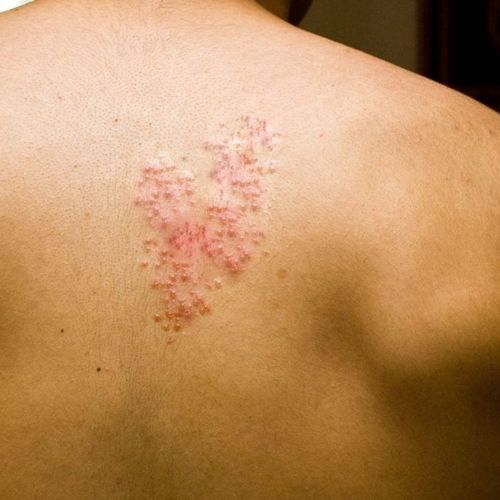Shingles is a painful nerve ailment caused by the reactivation of the chicken poxvirus in adulthood. one our of every five Americans will have shingles at some point in his/her life.
While the disease can occur at any age, it usually strikes after age 50 and is most common among people ages 65 to 80. Shingles rarely occurs more than once and typically lasts a week to 10 days. But if medication is not used promptly, that single episode can result in painful nerve damage that persists for years.
What Causes Shingles?
To get shingles, you must have been exposed to the chicken pox virus earlier in your life.
After someone has chicken pox, typically as a child, the virus that caused it-a type of herpes virus called varicella-zoster virus (VZV) or herpes zoster-retreats to nerve cells along the spinal cord, where it remains for life.
When immunity to VZV declines, either due to age or because the immune system has been weakened by a disease (such as cancer or AIDS) or medication (such as chemotherapy), the virus can suddenly flare up again as shingles.
Symptoms To Watch For
One of the unique aspects of shingles is that it occurs only on one side of the body, along the affected nerve. The first signs tend to be an unusual tingling, burning or itching sensation or an abnormal sensitivity along one arm, leg or cheek, sometimes accompanied by flu-like symptoms. This indicates that the virus has become active in the nerve root. Within a few days-the time it takes for the virus to reach the skin-a rash made up of painful, fluid-filled blisters develops in the area where the nerve sensations occurred.
Left untreated, the blisters usually dry up on their own in seven to 10 days. Prompt drug treatment can shorten the episode to three or four days. Once the rash clears up, however, 20% of shingles patients experience ongoing nerve pain in the affected area that can last for months or even years-a condition called post-herpetic neuralgia. in the most severe cases, even the slightest touch causes such excruciating pain that even normal activities become impossible.
Very important: The best way you can prevent post-herpetic neuralgia is to take antiviral medication within 72 hours of the first signs of tingling, burning or itching-before any blisters appear. (Just as when you have a herpes-related cold sore, medicine is used at the first sign of tingling, before the sore actually appears.) Once the virus has reached the skin-in 48 to 72 hours-it's too late for the medication to have any preventive effect.
Other dangers of shingles: Shingles sometimes affects a nerve supplying the face When this happens, the virus can spread to the eye or ear, leading to blindness or deafness if it's not treated quickly. Until they've dried up, the blisters are contagious, and direct contact with them could spread chicken pox (not shingles) to someone who has never had chicken pox.
If you have fresh shingles blisters, be especially careful not to get near a child who hasn't had chicken pox or has not been vaccinated against it, anyone who has a compromised immune system or any pregnant women who haven't had chicken pox (the fetus could be at risk if she catches chicken pox).
Diagnosing And Treating Shingles
If you feel a strange sensation that you suspect may be shingles, your best bet is to see a dermatologist at once. Diagnosing the early signs of shingles, before the rash appears, can be difficult. The rash itself can also be misleading, because it may resemble herpes simplex or contact dermatitis. A trained dermatologist will be able to spot the symptoms of shingles immediately and confirm the diagnosis by a viral culture.
Once diagnosed, the shingles patient is immediately started on a seven- to 10-day course of the antiviral drug acyclovir (Zovirax)-taken five times a day-or valacyclovir (Valtrex) or famciclovir (Famvir), both of which are taken twice a day. As mentioned above, the earlier the antiviral drugs are given, the more effective they will be. To prevent long-term complications, they should be started no later than 72 hours after the first signs of shingles appear.
Additional treatments may include topical antibiotics, such as Bactroban ointment, to prevent infection, and topical steroids, such as hydrocortisone, to help dry up the blisters and reduce painful inflammation. The infected area must also be kept clean as an additional safeguard against secondary infections.
In severe cases, such as in people who have weak immune systems, shingles can cover the entire body or spread internally. In both of these cases, the patient may need to be hospitalized and given acyclovir intravenously. If the eye or ear becomes involved, then the patient will need to be referred to an eye or eat specialist for appropriate treatment. If the patient develops post-herpetic neuralgia, appropriate pain management will also be required.
